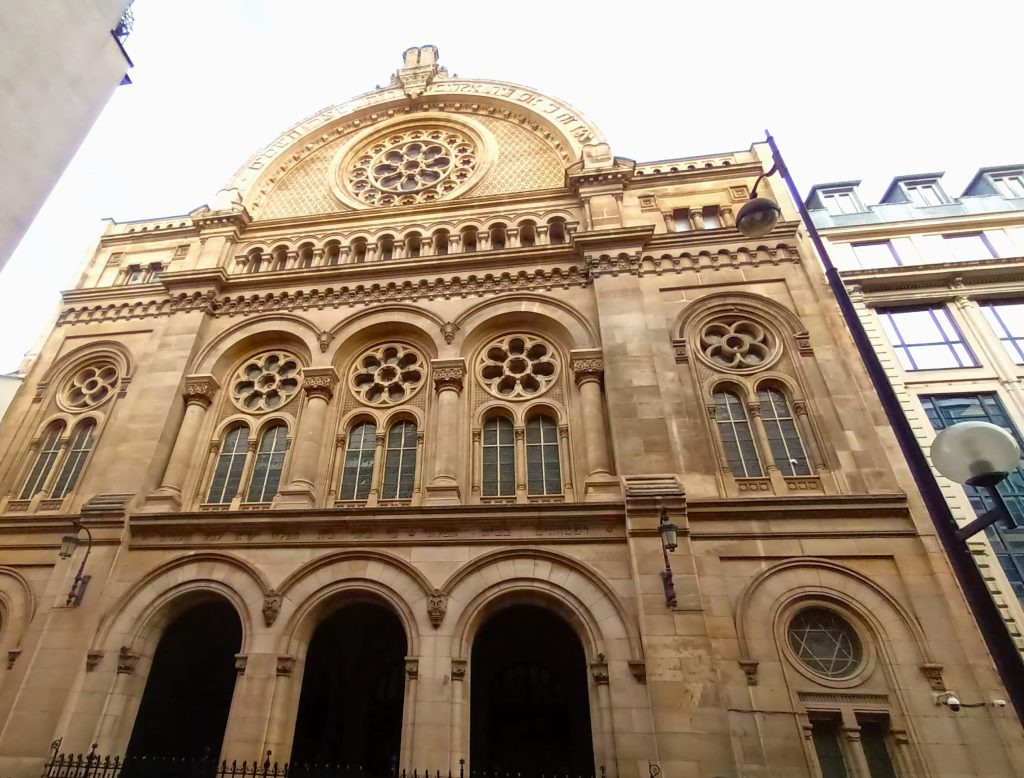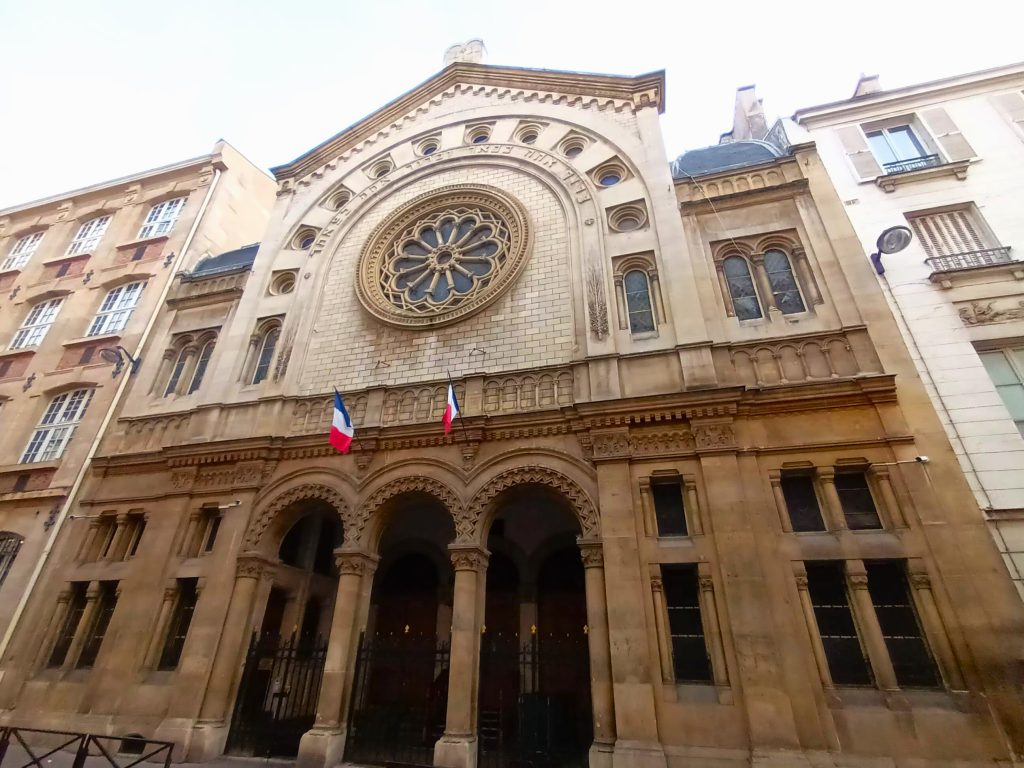In addition to its architecture and activities, the Opéra de Paris (or Palais Garnier) is notable for its extraordinary ceiling painted by Marc Chagall in 1964.

Not far from here, in a room at Hôtel de Castille (37 rue Cambon), Theodor Herzl wrote The Jewish State. This was the founding work of political Zionism, which bore fruit some fifty years later in the proclamation of the State of Israel.
The synagogue on rue de la Victoire is the biggest in Paris. This is where the Jewish community’s official ceremonies are held. Consecrated on September 9 1974, it was, according to the original design, supposed to to have an entrance on rue Ollivier (today’s rue de Châteaudun). However, on the advice of her confessor, Mgr. Bernard Bauer, a Hungarian of Jewish origin, Empress Eugénie opposed this idea: the Grande Synagogue de Paris must not open onto a main thoroughfare !

The synagogue was built to plans by the head architect of the City of Paris, Adrolphe, who was himself a Jew. The overall conception is a rather florid Romanesque, with Moorish echoes. Outside, the main facade is forty-three yards high. On it, the Hebrew inscription under the two Tablets of the Law reads: “My house shall be called the house of prayer for all peoples”. Inside, the large prayer hall and the five arches are flanked by two galleries. The upper gallery was designed purely for architectural effect. Nowadays, though, it can be used to hold worshippers during major celebrations, this increasing the synagogue’s capacity.
The building, which is thirty-four yards high to the keystone, is fifty-two yards long and thirty-three wide. Its only decoration is twelve stained-glass windows by Lusson, Lefèvre, and Oudinot representing the symbols of the biblical Twelve Tribes.

In 1874 the leaders of the Portuguese Jewish community refused the fusion of Sephardic and Ashkenazic rites and, at the same time, decided to build their own temple. To this end, a non-trading stockholders’ company was set up by Jews from Bayonne, Comtat Venaissin, and the Ottoman Empire with a view to buying land and financing construction.
The architect Stanislas Ferrand was entrusted with the design. The resulting synagogue , on rue Buffault, was consecrated on 3 September 1877. The facade is twenty eight yards high. On it, the following lines from Deuteronomy are written in Hebrew: “Blessed are you when you come in, and blessed are you when you go out”.
Inside, the gallery is supported by six marble columns. The arches around the keystone form the Tablets of the Law and have biblical names inscribed on them.
At the center of the prayer hall, a large seven-branch candelabrum stands on the altar. To the rear, a large staircase with a wrought iron balustrade leads to the cupboard that houses the Torah scrolls. Above the cupboard, emerging from sculpted stone clouds, are the Tablets of the Law.
The Tsarphat
During the early planning stage in 1850, the synagogue on rue de la Victoire was intended to house a unique French rite, the Tsarphat, a single liturgy combining Portuguese chants and Alsatian pronunciation. This generous idea caused no end of debate. In 1866, a report by the consistory noted that ‘The construction of the temple on rue de la Victoire will make it possible to fulfill the oft-expressed wishes of our coreligionists from the German rite and the Portuguese rite, namely to meet in a shared-sanctuary, in a word to establish there a unified rite that is so desirable in every way”.
The war with Prussia in 1870 delayed the project. Finally, on 17 May 1874, Zadoc Kahn, the grand rabbi of France, brought together 150 Sephardic notables, who, after a debate, firmly rejected the idea. The synagogue on rue de la Victoire would thus become an Ashkenazic temple. However prayers were still spoken “in the oriental manner” for another fifteen years; they had not given up all hope of fusion.